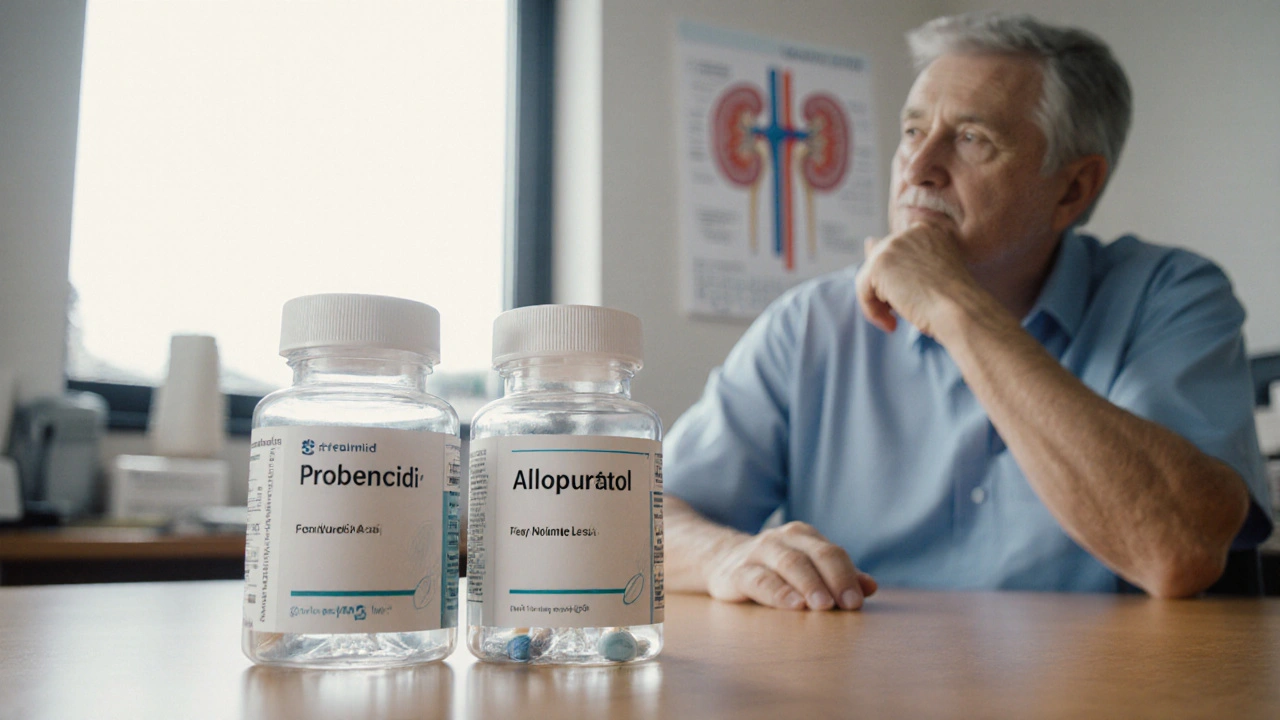
Benemid (Probenecid) vs. Alternatives: Complete Gout Medication Comparison
A clear, side‑by‑side guide comparing Benemid (Probenecid) with allopurinol, febuxostat, and other gout treatments to help you choose the right option.
Read MoreWhen your joints swell with sudden, sharp pain—especially in the big toe—you’re likely dealing with febuxostat, a prescription medication used to treat chronic gout by lowering uric acid levels in the blood. Also known as Uloric, it’s one of the main drugs doctors turn to when older treatments like allopurinol don’t work or cause reactions. Unlike painkillers that just mask the flare-up, febuxostat goes after the root cause: too much uric acid building up because your body either makes too much or can’t flush it out properly. Over time, that acid forms sharp crystals in your joints, triggering those brutal gout attacks.
Febuxostat works by blocking an enzyme called xanthine oxidase, which is responsible for turning certain foods into uric acid. Less enzyme activity means less acid in your blood. This is different from allopurinol, the older, more commonly used gout drug that works the same way but can trigger severe skin reactions in some people. If you’ve had a rash or allergic response to allopurinol, febuxostat is often the next step. But it’s not for everyone—people with heart disease need to be careful, since studies showed a slightly higher risk of heart-related deaths compared to allopurinol. Your doctor will weigh your history before deciding.
Managing gout isn’t just about pills. uric acid, the substance that causes gout when it builds up is heavily influenced by what you eat. Red meat, shellfish, alcohol—especially beer—and sugary drinks all push levels higher. Even if you’re on febuxostat, cutting those out helps the drug work better and reduces flare-ups. And if your uric acid stays high despite treatment, you might be dealing with hyperuricemia, a chronic condition where uric acid levels stay too high, even without visible gout symptoms. That’s when long-term medication becomes necessary to prevent joint damage and kidney stones.
Many people wonder if febuxostat is better than allopurinol. The answer isn’t simple. Allopurinol is cheaper and has decades of safety data, but febuxostat works faster and doesn’t need dose adjustments for kidney issues in most cases. Still, if you’re young, healthy, and have no history of heart problems, allopurinol is usually tried first. If you’re older, have kidney trouble, or can’t tolerate allopurinol, febuxostat becomes a strong option. Side effects like liver enzyme changes, nausea, or rash can happen, so regular blood tests are part of the plan.
What you’ll find below are real comparisons and patient-focused guides—how febuxostat stacks up against other gout treatments, what to do if it doesn’t work, how diet affects uric acid even while on medication, and what signs mean you need to call your doctor. No fluff. Just clear, practical info to help you understand your treatment and make smarter choices with your healthcare team.

A clear, side‑by‑side guide comparing Benemid (Probenecid) with allopurinol, febuxostat, and other gout treatments to help you choose the right option.
Read More